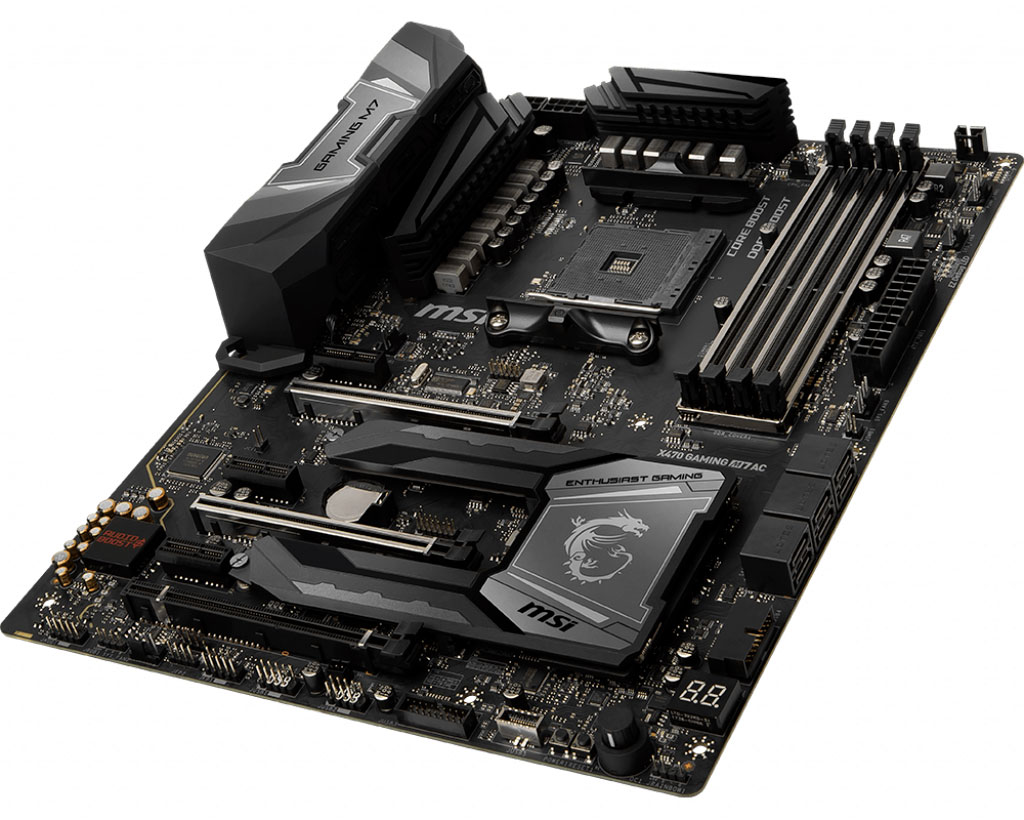MSI Makes AMD 400-Series Motherboards Ryzen 3000-Ready
With the launch of the AMD Ryzen 3000-series CPUs this week, MSI is reportedly updating its AMD 400-series motherboards with bigger BIOS chips to provide support for the larger database of AMD processors.
As AMD's family of processors continues to grow, MSI finds itself in a sticky predicament. The BIOS chips on some of the brand's 300-series and 400-series motherboards have run out of space to store the microcode and memory training tables for every single AMD processor.
ASMedia won't start shipping B550 and A520 chipsets to motherboard manufacturers until the fourth quarter. Therefore, the corresponding motherboards won't arrive until the end of the year or possibly until next year. So, there is still demand for 400-series motherboards among Ryzen 3000-series adopters who don't want to opt for the more expensive X570-based motherboards.
Polish media PurePC recently reported that MSI will substitute the 16MB BIOS chips that were previously used on A320, B450 and X470 motherboards with 32MB ones. The refreshed motherboards will reportedly carry the MAX suffix (example: X470 Gaming Pro MAX or B450M Mortar MAX). A recent EEC (Eurasian Economic Commission) listing reveals up to 10 different MAX motherboards. It's uncertain at this point if MSI will give other models the same MAX treatment.
| Chipset | Motherboard |
| A320 | A320M-A PRO MAX |
| B450 | B450M-A PRO MAX |
| B450M PRO-VDH MAX | |
| B450 GAMING PLUS MAX | |
| B450M PRO-M2 MAX | |
| B450M MORTAR MAX | |
| B450 TOMAHAWK MAX | |
| B450-A PRO MAX | |
| X470 | X470 GAMING PRO MAX |
| X470 GAMING PLUS MAX |
MSI has already released Beta BIOSes for a number of older AM4 motherboards to support the new Ryzen 3000-series chips. However, the motherboard manufacturer had to make a lot of sacrifices to make this happen. For starters, it removed all the eye candy from the BIOS interface. All the cool and flashy elements from the "Click BIOS 5" interface were replaced with a boring black background and simple icons. MSI calls this new interface "Click BIOS (GSE Lite)."
In order to squeeze in support for the new third-generation Ryzen chips, MSI also dropped support for the A-series and Athlon Bristol Ridge APUs, such as the A12-9800, A10-9700 and Athlon X4 970, among other models.
Many users can probably live without Click BIOS 5 and support for the archaic Bristol Ridge APUs. However, the biggest disappointment from MSI's stop-gap solution is the elimination of the RAID module. If you upgrade to the Beta BIOS, you will basically lose all RAID functionality, which means saying goodbye to your existing RAID array. And you won't be able to create a new one in the future.
Get Tom's Hardware's best news and in-depth reviews, straight to your inbox.

Zhiye Liu is a news editor, memory reviewer, and SSD tester at Tom’s Hardware. Although he loves everything that’s hardware, he has a soft spot for CPUs, GPUs, and RAM.
-
jimmysmitty I mean couldn't they also have two BIOS updates available, one that supports 1st and 2nd gen then another that supports only the 3rd gen and possibly 4th gen when it comes out for older boards with smaller BIOS cache sizes?Reply -
Saieden Any idea when these will start shipping? Might be worth waiting for if it isn't more than a couple weeks.Reply -
mikewinddale jimmysmitty, the problem is, if you're upgrading the CPU, you need a BIOS that supports both the first CPU and its upgrade. For example, if you have a Ryzen 2 and want to upgrade to a Ryzen 3, you need a BIOS that supports both processors.Reply
And furthermore, when they ship a retail motherboard, they have no idea which CPU someone will install it in. Let's say they ship the motherboard with the BIOS supporting the Ryzen 1&2. Then what's someone with a Ryzen 3 supposed to do? Similarly, if they ship the motherboard with the BIOS supporting the Ryzen 3, then what is someone with a Ryzen 1 or 2 supposed to do?
Theoretically, a person could be upgrading from anything to anything. And if they buy a new retail motherboard, they could be installing anything. So that makes it hard. If the manufacturer says they support CPUs X, Y, and Z, then they need a BIOS that supports all those CPUs at once. -
cryoburner ReplyHowever, the motherboard manufacturer had to make a lot of sacrifices to make this happen. For starters, it removed all the eye candy from the BIOS interface. All the cool and flashy elements from the "Click BIOS 5" interface were replaced with a boring black background and simple icons.
This does not sound like much of a sacrifice to me. Do we really need fiery dragons and giant buttons in our BIOS menus? : D -
jimmysmitty Replycryoburner said:This does not sound like much of a sacrifice to me. Do we really need fiery dragons and giant buttons in our BIOS menus? : D
The flaming dragon gives +10 to attack and makes the UEFI run faster. -
arc1880 So these are the motherboards that are affected with the removal of features with Bios update?? I have the X470 Gaming Plus. What about other companies such as Gigabyte, ASUS, and ASRock???Reply

